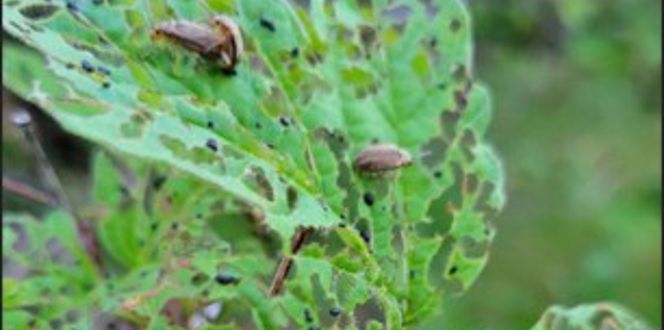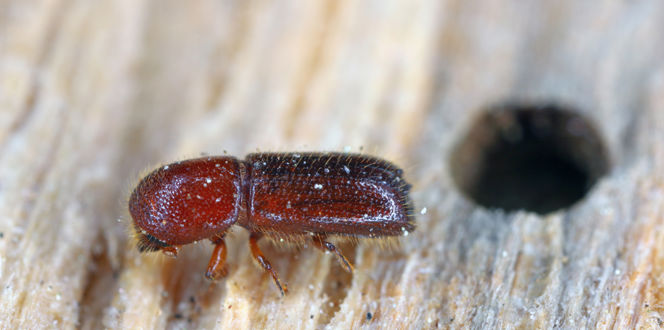Oaks are big and majestic trees – larger than life. The mighty oak enhances the property of many homeowners throughout the world.
But there is a tiny, invasive beetle – the size of a sesame seed – that is attacking oak trees in central California and Oregon.
This beetle, called the Mediterranean oak borer (Xyleborus monographus), typically attacks trees already weak from experiencing drought, wildfire, or disease.
Let’s learn a little bit more about this species of ambrosia beetle and how you can keep it from munching on your favorite trees.
Mediterranean Oak Borer Identification
The Mediterranean oak borer (MOB) is an invasive ambrosia beetle native to the Mediterranean region, including Europe, the Middle East, and North Africa, where it primarily attacks oak species.
It came to the U.S. in 2019.
They are pretty small insects – 1/10th of an inch in length. Some describe how to identify the mediterranean oak borer as being the size of a piece of pencil lead.
The female versions of the beetles tunnel into thin-barked areas or cracks in the bark of weak trees. They actually carry fungi that they use to inoculate the tunnels they make in the trees where they lay their eggs
Over the years, the beetles can infest and reinfest the trees until they kill them.
What Does Mediterranean Oak Borer Damage Look Like?
Since Mediterranean oak borers are so small, it’s unlikely you’ll visibly see the insects in your oak trees.
That means you’ll want to look for Mediterranean oak borer damage first.
The initial signs of infestation will be clusters of wilting and dieback in the upper reaches of your tree. You’re looking for wilted leaves initially that will then turn red. These leaves will eventually drop from the tree, leaving bare, dead branches.
You might also see white dust from the tree trunk that accumulates in mounds on nearby surfaces or on the ground. From the tiny holes in the trunk, you may also see oozing sap.
Susceptible Trees To MOB
There are at least 12 known species of oaks that have been infested by MOB. In the west, it attacks valley oak (Quercus lobata) (most common), blue oak (Q. douglasii) and black oak (Q. velutina).
Mediterranean Oak Borer Diagnosis
A certified arborist will diagnose Mediterranean oak borer by seeing the signs and symptoms in an infected tree.
Symptoms will be apparent in the upper part of the tree first, and then move down the tree, impacting larger branches as they go.
Mediterranean Oak Borer Management
If a certified arborist confirms a Mediterranean oak borer infestation, the best course of action is to remove the tree.
They’ll take the infected wood and destroy it to stop the spread of the pest.
Ways To Limit Spread
There are a number of things you can do to control the spread of Mediterranean oak borer.
- Improve overall plant health of the tree to reduce stress. This may be done through deep root watering during periods of drought stress, incorporating targeted fertilizer applications to improve soil health.
- To slow the spread in infected trees, remove affected branches. Prune back to healthy wood, well below galleries. This is best done in the fall/winter while mated females overwinter in the sapwood.
- Be aware to not move infested wood to prevent spreading pests to other areas.
- Infested wood should be chipped as small as possible (to a diameter of one to three inches.)





